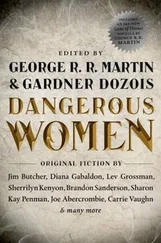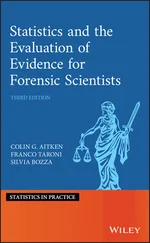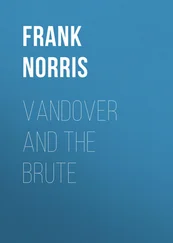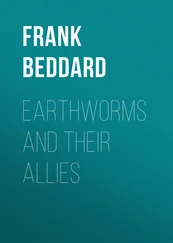Hence, it can be no surprise that barely two years after ‘The Palm Trees ...’ was published, Maria Hilchenbach published her doctoral thesis, Kino im Exil (Munich: K.G. Saur, 1982), which is also an attempt at a general overview of film exile and as such, quite obviously inspired by Horak. Seen in hindsight, it appears that with Horak’s article, the floodgates were opened, and the topic of exiled German-Jewish film artists moved to the centre of the attention of exile researchers. In 1984, for instance, film historians Hans-Michael Bock and Hans-Helmut Prinzler launched the Cinegraph Research Institute and, through the Munich-based publisher Edition Text und Kritik, they have since periodically published important reference works on exiled film artists such as Reinhold Schünzel, Joe May, or E.A Dupont. 9Two other significant early 1980s works on exile also both came out in the same year. They are not dissimilar to Horak’s ‘The Palm Trees ...’ in approach and subject matter, since they echo Horak’s concern with finding a more scholarly basis for exile research. However, they became more of a hybrid than Horak‘s article. John Russell Taylor’s Strangers in Paradise (New York/ NY: Holt, Rinehart & Winston, 1983), and Anthony Heilbut’s Exiled in Paradise (New York/ NY: Viking Press, 1983), both published in 1983, discuss the broader topic of German-Jewish exile while also making frequent mention of exiled Jewish film artists, including through references to the EFF. While due to its source material, which consists of interviews and empirical data, among other sources, Heilbut’s study has more scholarly value than Taylor’s, which relies on secondary sources only, both must nevertheless be regarded as hybrids between popular and scholarly publications. In contrast to Taylor’s book, Heilbut’s account goes beyond the anecdotal, and rather than being solely based on secondary sources, he also draws on oral histories and personal correspondence with former émigrés. Whereas Taylor is a film critic, Heilbut is an academic. As the American born son of German-Jewish émigrés, Heilbut can be considered a figure whose background provided the impetus for his preoccupation with exile, calling to mind the late Karsten Witte who, in a report on the publication of Berlino-Vienna-Hollywood at the 1981 Venice Biennale alluded to Thomas Elsaesser (UK), Bernard Eisenschitz (France), and Jan-Christopher Horak (USA) with the remark, ‘It was primarily the children of emigrants who first embarked on exile research’. 10
Prior to Strangers in Paradise, Taylor, besides writing for Sight & Sound, served in 1969 as jury member at the Berlin Film Festival. He was also Hitchcock’s official biographer and had already published a number of bio-critical studies, all revolving around Hollywood figures from the 1930s/40s, from which it is only a small leap to the topic of exile. 1 1Taylor’s and Heilbut’s books share some striking similarities as well as some differences. Besides discussing the same subject matter and being published in the same year, they are both influenced by Salka Viertel‘s autobiography, The Kindness of Strangers, from which they frequently quote. While Heilbut focuses solely on German-Jewish emigration, however, Taylor’s book, echoing Baxter‘s, includes émigrés from other European countries.
The scarcity of scholarly literature on exiled film artists at the time led to both books being at least consulted sometimes even cited by, scholars, and consequently both have their detractors as well as their supporters. Although his work is much more ambitious in scope, it is apt to introduce Jean-Michel Palmier’s Weimar en exile at this point. Published five years after Taylor’s and Heilbut’s publications, it resembles theirs inasmuch as it is also something of a hybrid between an scholarly study and a popular publication. Like Heilbut, Palmier draws on a number of sources, including archival data and oral histories. And it is no doubt these oral histories which sparked his preoccupation with exile in the first place, for they were all with well known figures connected to Weimar culture: Blandine Ebinger, Maria Ley Piscator, Lotte Eisner, etc. Nevertheless, Palmier also drew on secondary sources, since exile research at this point was yet in its embryonic stage, and archival sources were still relatively sparse. 12
In another parallel to both Taylor and Heilbut, Weimar en exile also remained Palmier’s sole contribution to the field of exile research before his untimely death in 1998. Palmier’s concern with exile derives from the fact that he was a professor of Esthéthique et des sciences de l’art at Université Paris 1/ Panthéon-Sorbonne. Weimar culture was his area of expertise, with his publications on the topic being numerous. 13It is precisely this culture, referred to by Palmier as ‘one of the richest [such] that it strikes us as forming an almost unique example’ (Palmier 2006: 17) which was lost following the Nazi takeover, prompting Palmier to embark on a monumental effort of memorialisation, ‘to remember their story’ (Palmier 2006 18).
In Weimar en exile Palmier strives to cover the entire emigration, including film artists, writers, academics, and political refugees, as well as all the émigré hubs in such countries as France, Switzerland, the UK, the Netherlands, Turkey, and China. Palmier’s book is, in fact, a compendium of German-Jewish exile. This clearly sets it apart from most other studies on exile, and was in its time a far more ambitious undertaking than most previous efforts, including Taylor’s or Heilbut’s. Justifying his decision to take an all-inclusive approach to the topic of exile, Pamier explains that
the scope of the subject, and its complexity, suggest that it should either be tackled collectively or that its scope should be very closely delimited (Palmier 2006: 15).
Weimar en exile bears a faint resemblance to the Manns’ Escape to Life, and the frequency with which he refers to their book make it obvious that it served as an inspiration for his own work. Issues Palmier discusses - and which echo Escape to Life - include the events leading up to the Nazi takeover; Goebbels’ establishment of the Reich Chambers of Culture, what these various chambers entailed, how they functioned and, also, their well-known consequences for Jewish artists; anti-Nazi theatre in exile; émigré periodicals; the rise and fall of the Popular Front; the German Resistance; and the émigrés’ perspectives on post-war Germany.
Although Palmier’s mission - large-scale and ambitious as it is - is without precedent, some sections of the book crash under its enormous scope. Clearly, Palmier is much more at ease discussing writers, politicians and academics such as Willi Münzenberg, Bertolt Brecht, Walter Benjamin, or Carl von Ossietzky, as his knowledge on - and probably interest in - them is that much more profound than that concerning film artists. Consequently, while Weimar en exile is a valuable research tool in many respects, it is also a warning sign that by expanding the scope the risk of inaccuracy increases. Certainly, in a move inspired by Horak’s examination of the impact of refugee film artists on Hollywood, the focus of exile researchers slowly started to shift from the mid-1980s on from a general to a more detailed observation of the influence the exiles brought to bear on the US film industry. This is manifest, for instance, in an exhibition held at the Max Kade Institute of the University of Southern California in 1986. While the exhibition covered the German-speaking emigration to Hollywood, starting with Carl Lammle’s arrival in the US in 1884, it nevertheless homed in on the years after 1933. While the catalogue to the exhibition identifies several areas and genres where the impact of émigrés on American popular cinema is palpable (e.g. the horror film, the use of film scores, the social problem film) the fact that exile research was still in its early stages is evidenced by the curator’s comment that after 1933, they could only detect one single ‘genre influenced by the Germans’ (Angst-Norwik & Sloan 1986: 9). This, of course, was film noir, although Paul Schrader - one of the first to link the émigrés’ presence in Hollywood to film noir - himself said that ’there is a danger of overemphasizing the German influence on film noir’ (Schrader in Belton 156: 1996), while film historian Andrew Sarris, for instance, claims that ‘[film noir] is very difficult to define or even categorize as a self-enclosed genre simply because it is largely a critical afterthought in film history’ (Sarris 1998: 104). 14
Читать дальше












